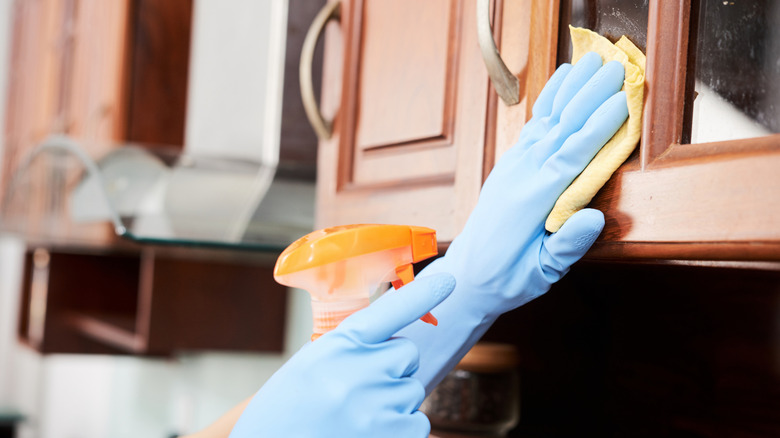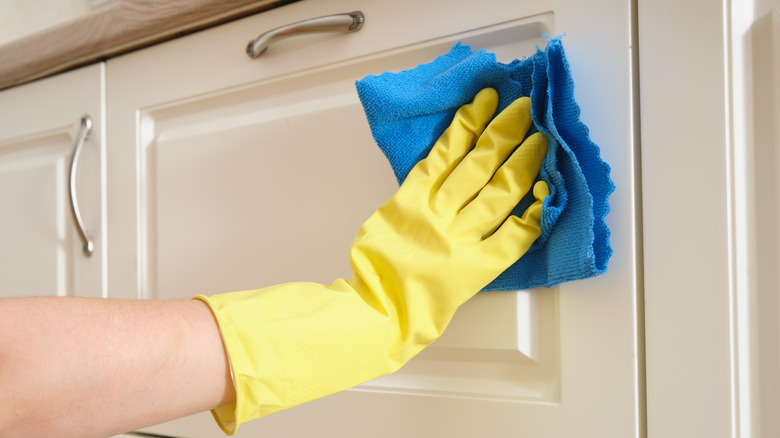The Popular Household Cleaner To Avoid Using On Grimy Kitchen Cabinets And Why
Do you ever look up and notice your cabinets have somehow developed a layer of grime overnight? Don't worry, you're not the only one who doesn't notice that their cabinets, which were once white, are now a slight yellowish-beige in color. Many homeowners don't realize how often they should be degreasing their kitchen cabinets. And kitchen cabinets have a knack for getting grimy, really quickly. But before you go reaching for that all-purpose spray cleaner, check to make sure it doesn't contain bleach. Bleach is one of a few cleaning ingredients that can destroy the finish on your kitchen cabinets. And there is a safer alternative for both you and your cabinets. And you won't need to ventilate your kitchen to do it.
Bleach is a great way to sanitize and clean many areas of your home, but your kitchen cabinets are not among them. Bleach is highly corrosive; it can damage and discolor paint, harm cabinet finishes, and warp wood. This is also why you should avoid using abrasive cleaners, mineral spirits, products with ammonia, or anything with high acid content to clean your cabinets. If you want to clean the grease, grime, and stains off your cabinets, there is a simple and incredibly effective method. All you need to get your cabinets clean is water, a couple of microfiber cloths, and a few pumps of dish soap. Not only is this method gentle on your kitchen cabinets, but it is also safe and effective at degreasing and cleaning.
How to remove kitchen cabinet grime without using bleach
To easily remove grease and grime from your kitchen cabinets, you'll only need dish soap, preferably Dawn. You'll also need a duster, two or three microfiber cloths, and two bowls of warm water. The first thing you'll want to do is remove any dust, starting at the top of the cabinet and working your way down to the bottom. Otherwise, you'll be creating a muddy mess. As you go through the cleaning process, you will also want to refresh your water bowls as needed. Your first bowl should have warm water and a couple of drops of dish soap (this is your washing solution). For your second bowl, use the second cloth to rinse. You do not want to leave any soapy residue on your cabinets, as this will attract more grime.
Take your first cloth and dip it in the soapy water, wring it out well, wash down your cabinets — be sure to follow the grain if they're not painted. Next, take your cloth from your rinse bowl and go over the area you just washed. If your cabinet is especially grimy, you might need to scrub a little with your microfiber cloth and repeat the cleaning process. Alternatively, you can apply some dish soap directly to your cloth and then scrub. Once you have completed both steps, you can go back over with a third cloth if there is water on the surface of your cabinets. You want to make sure your cabinets are completely dry after cleaning, so your wood does not warp or become damaged. And it's always a good idea to spot-test your cabinets in a not-so-visible area before diving in.

